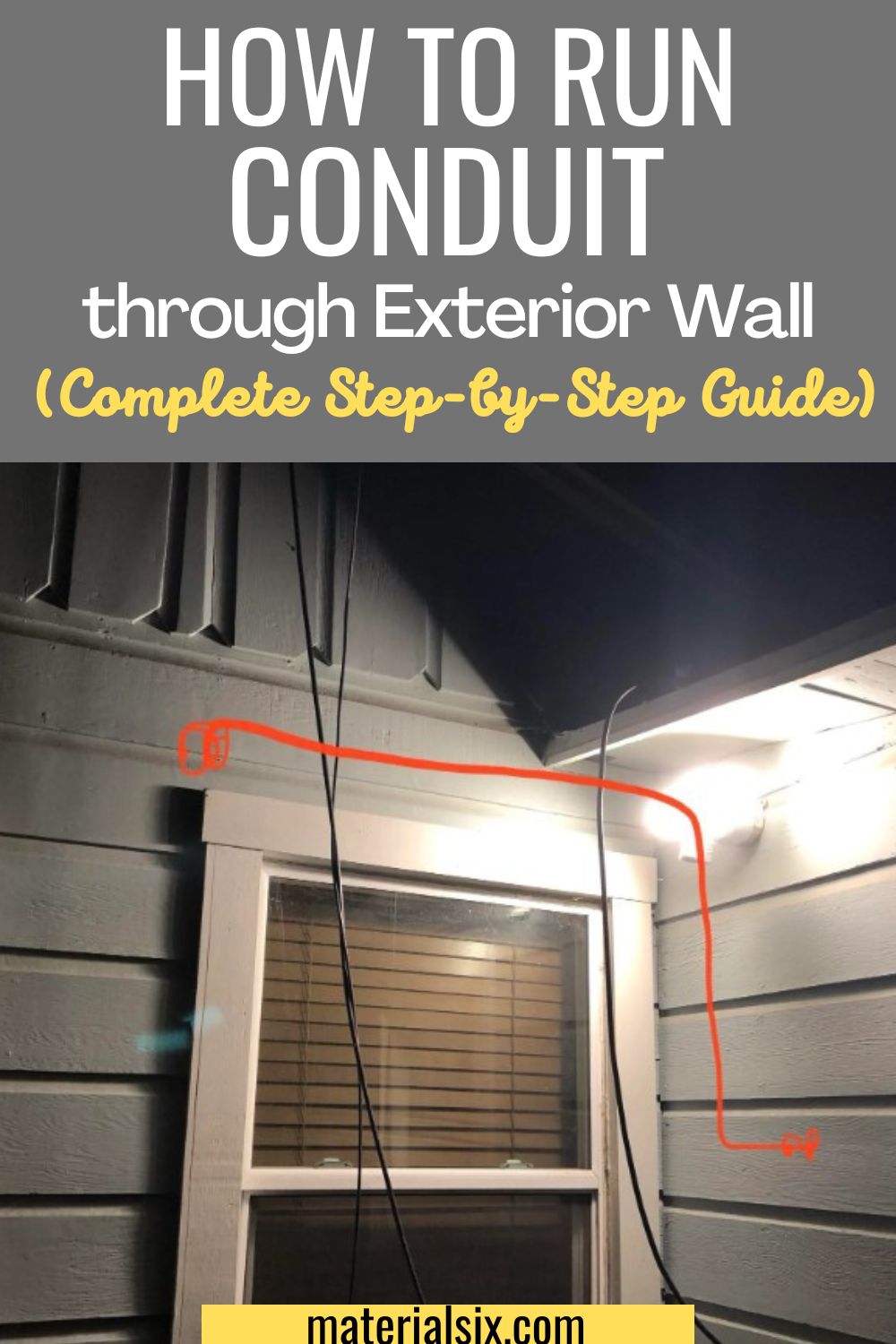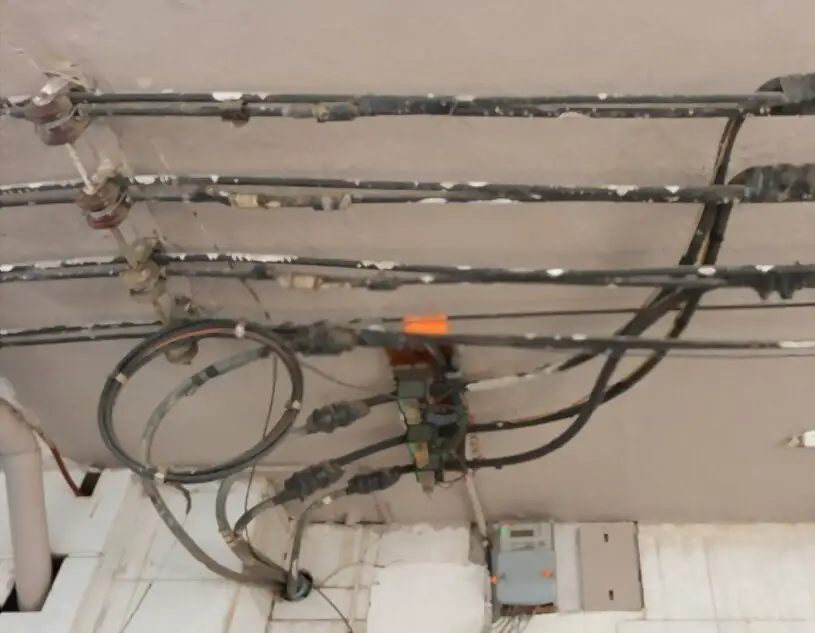How To Run Conduit Through Exterior Wall – Every once in a while, you will need to run wires through your exterior walls. Installing wiring in a garage or workshop is a great idea. These wires can be efficiently run through a conduit.
There are waterproof and submersible conduits. The conduits are resistant to moisture, impact, and vapors. Their outdoor weather resistance makes them ideal for outdoor use.
A house’s exterior will not be damaged by exposed wires running along walls when a conduit is run through an exterior wall.

How to run a conduit through an exterior wall
- The first step is to drill a hole in the wall using a drill bit. Ideally, your conduit should be slightly more significant than the size you select.
- Then, bend and cut the conduit as necessary
- Continue by inserting the conduit into the wall hole. Where necessary, add conduit supports.
- Last but not least, caulk the walls to close up the gaps.
Conduit Selection
Since PVC conduits are corrosion-resistant, they are ideal for underground use.
The lines are often gray so that people can distinguish between an electric cord and a water line.
Electromagnetic interference can be shielded from circuits with metal conduits.
The PVC conduit should be at least 1/2 inch thick if you pull 3 or 4 wires. Wires might be needed in the future. Therefore, a larger one would be a good idea.
The area where you wish to install the conduit will need to be marked. After marking your conduit, measure the length that you will need in EMT or PVC.
Here is a step-by-step guide for installing a conduit through your exterior wall.
How to Run Conduit Through a Wall
Step 1: Drill an opening in the wall
The first thing you need to do is drill a hole in the wall. Drill bits should be selected according to their size. It is essential that the conduit can fit in the hole.
Step 2: Bend and cut the conduit
It is necessary to use a bender for flexible or EMT conduits. The straight sections of the conduit can be connected with 90-degree and 45-degree fittings without using a bender.
An easy solution to 90-degree bends is to use a pulling ell. The wires are bent around the corner using the removable cover.
If you need to bend the PVC conduit to an angle, you can heat the pipe using a propane torch. Once it is cooled, the shape will remain.
Make sure you measure and cut the conduit to the correct size after taking the measurement.
For conductors to easily be pulled through, their insides must be smooth with no sharp edges.
Then, smooth the end of the cut with the blade of a screwdriver.
Next, remove any sharp edges from the cut end with slip-joint pliers.
Step 3: Insert the conduit into the hole
The conduit will now be slid through the wall hole.
You probably need an ell puller. ‘L’ or ‘el’ represents a 90-degree bend. Two letters represent the exit point direction.
Confirm that the hole drilled in the outside wall has enough space for the conduit to pass.
Make sure that there is no water in the conduit before you slide it through the wall. If you plan to install wires near water, you need to use a GFCI breaker.
By turning the wires at an angle of 90 degrees inside the conduit, the L fitting will help you. Wires will be easily inserted and removed from the L fitting because its back is removable.
Install the L fitting on the conduit. You can use PVC glue for PVC projects.
The conduit connector can be used to connect the wall to the ground securely. Ensure that the box connector’s nuts are tight.
Extension of the Box
The box extension is necessary if you are going to run the conduit through a pre-existing electrical box. Use a 4-inch square box for a single gang box.
Fit the conduit into the box with an offset fitting.
Step 4: Install conduit supports
The conduit must be supported with conduit hangers if it runs along a wall.
- For the first hanger, measure 3 feet from the box.
- Ten feet apart will follow the next set of hangers.
- Place the hangers where they will be measured and marked.
- Screws can be used to attach conduit hangers.
- Anchors are required where there is no solid attachment to the wall.
Step 5: Pulling the wire through the conduit
Wires can be pulled through conduits using fish tape.
If you are trying to turn the wire around a corner, you can remove the L-fitting lid.
Wires and connectors are now inserted into the conduit.
Step 6: Seal gaping holes in walls with caulk
Then, use silicone caulk to seal around the conduit connection between the exterior wall and the hole.
Step 7: Digging a trench(optional step)
You will have to dig a trench if you are putting a wire underground.
- The municipality should be contacted before digging a hole. The excavators will inform you of any existing utilities (electric, water, gas, etc.).
- Make a 25-inch-deep hole with a shovel.
- Trench machines are needed for long wires. Several hardware stores rent these items as well.
- Trench filling
- Sand should be placed in the trench after the wire has been run. The layer serves as a warning for future diggers.
- Over the sand layer, apply red caution tape.
- Add the soil as the final layer.
What is the procedure for installing an EMT conduit?
In homes, electrical conductors are typically installed using an EMT conduit.
- To install a conduit, you need to mark the area to be covered. Make a mark on the conduit and measure its length.
- Cutting the conduit requires the use of a hacksaw. Using the blade of a screwdriver or pliers, smooth out any rough edges when making cuts.
- EMT conduit can be bent if it is necessary.
- Fittings must be attached so that the conduit remains in place.
- Wires should be pulled through conduit with fishing tape.
Is conduit required for electrical wires?

For protection against outside forces such as sunlight, rain, chemical vapors, and crushing forces, it is necessary to run electrical wires through conduits.
Depending on your needs, you can choose from plastic, metal, or fiberglass conduit. There are rigid ones and flexible ones.
Conduiting electrical wire is a good idea. Electric wires are susceptible and should be protected.
Furthermore, conduits like PVC conduits or metallic electrical tubing (EMT) conduits can last a very long time.
Organizing the wires in the conduit makes them easier to handle. The cables are easily accessible if you need to repair them or work on them.
Last but not least, ensure that the ground wire is securely attached to the conduit.
Conclusion
Installing a conduit through your exterior wall is possible with the right tools and techniques.
More from MaterialSix:









